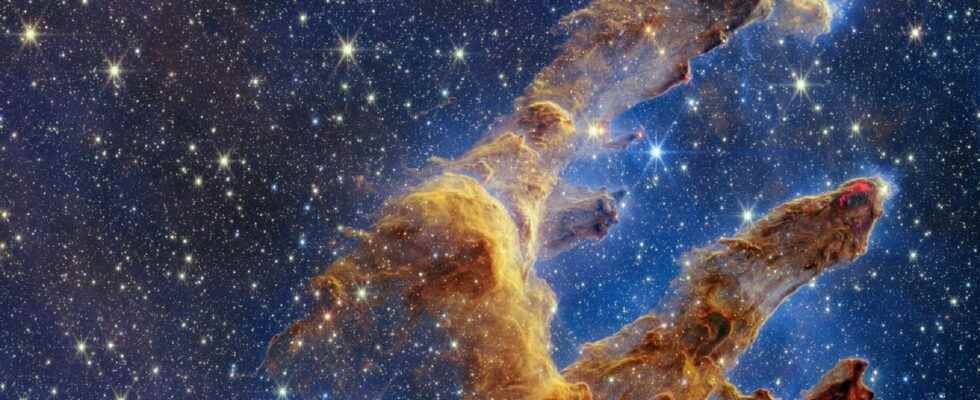What can we say except that the James Webb telescope has kept all its promises since it was put into service. This marvelous tool delights us for the umpteenth time with a photo that would almost do without comments.
This week, the target is none other than the iconic pillars of creation!
A target of choice
Over the weeks, James Webb has managed to dazzle us with absolutely incredible shots of our universe. We were able to observe Neptune, Jupiter, the Orion Nebula or even an exoplanet with astonishing details. The telescope still has beautiful moments to offer us and a new photo reached us this Wednesday, October 19, 2022.
The Pillars of Creation have finally been scrutinized by James Webb. Behind this name hides an immense cloud of cold gas and dust in which stars are formed. These pillars, which look like rock formations, measure more than 4 light years. 27 years ago, in 1995, Hubble was already restoring a sumptuous photo.
A dream vision
In the comparison below, we can see that the visual produced by James Webb has much more vivid colors. The gas cloud is also more transparent and therefore allows more stars to be seen. A feat achieved thanks to James Webb’s infrared light view (via the NIRCam tool).
In this new image, what appears in bright red represents the heated gas obtained when stars are born. The more wavy lines illustrate ejections emanating from stars in formation. It is more precisely about collisions between the gas and the supersonic jets of the stars in question. According to NASA, these famous stars would be barely a few hundred thousand years old. Below, you’ll find an explanatory video that dives into the details of the image.
In short, it is a breathtaking new vision located 6500 light years from our Earth that James Webb offers us today. A nice present !
Source : NASA

3